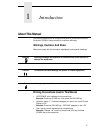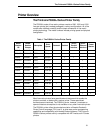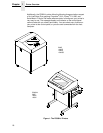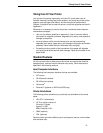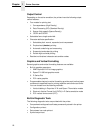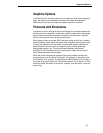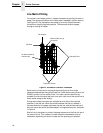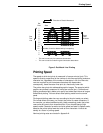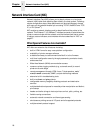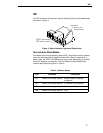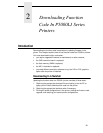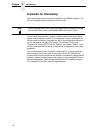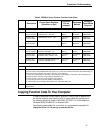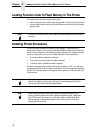
Printing Speed
25
Figure 3. Dot Matrix Line Printing
Printing Speed
The speed at which text prints is measured in lines per minute (lpm). This
speed is directly proportional to the number of dot rows required to produce a
character line, regardless of the number of characters in the line. More dot
rows are required to print lowercase characters with descenders;
consequently, those character lines print at a fractionally lower rate.
The printer also prints dot-addressable graphic images. The speed at which
graphics are plotted is measured in inches per minute (ipm). Unidirectional
plotting produces slightly better print quality and takes about twice as long as
bidirectional plotting. You can select either plotting mode from the control
panel.
Printing and plotting rates also vary according to the print mode you select.
Print mode refers to the way you instruct the printer to create characters. If,
for example, you select standard quality (data processing) mode, the printer
uses more dot rows to form characters than if you choose Sparse (high
speed) mode. Character formation and print speed are faster in Sparse mode,
because the printer prints fewer dot rows to form characters. Vertical dot
density is a factor in printing speed.
Nominal printing rates are charted in Appendix A.
Dot
Row Start
Paper
Feed
Number of rows is determined by line spacing.
1
2
3
4
5
6
7
8
9
10
11
n
1
2
*
**
This row is used only for lowercase descenders.
This row is used for underlining and lowercase descenders.
*
**
One
Text
Line
Direction of Shuttle Movement
Direction



